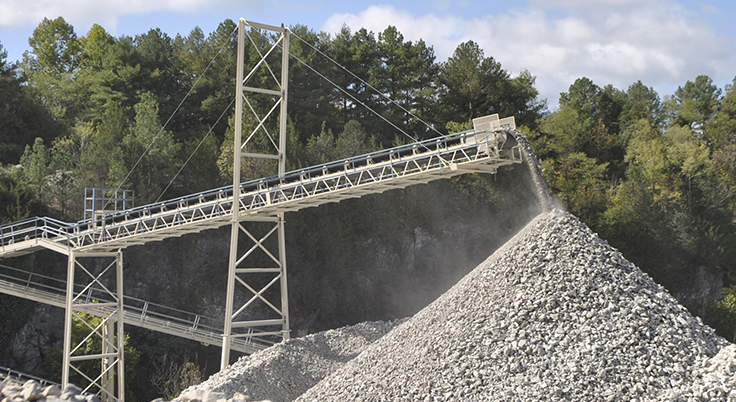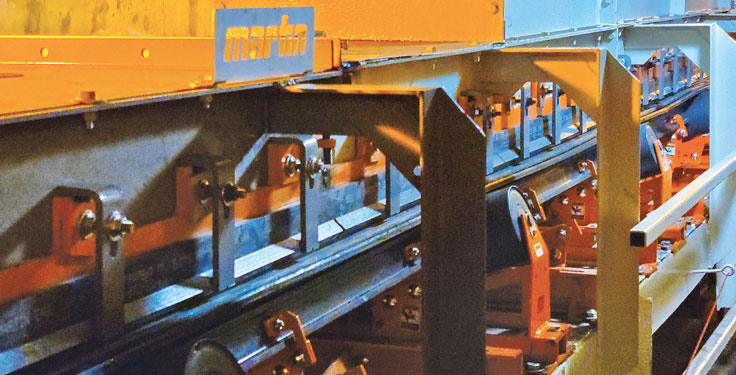Regardless, aggregate and ready-mixed concrete producers will benefit from surprising resilience in residential construction. FMI’s third-quarter outlook forecasts total residential construction to be down 6 percent for 2023.
Nonresidential developments
The broad umbrella of nonresidential construction is having varying impacts on the construction materials sector. The once-booming warehousing market appears to show signs of cooling, but aggregates and cement have other outlets.
“As warehouse construction has moderated … other heavy industrial projects led by onshore manufacturing and energy continue to drive demand … accounting for the majority of total nonresidential shipments,” says Ward Nye, chairman, president and CEO of Martin Marietta.
Tom Hill, chairman, president and CEO of Vulcan Materials Co., shared similar sentiments during his company’s second-quarter earnings call.
“Private nonresidential construction … starts remained at healthy levels, with particular strength in large manufacturing and industrial projects,” Hill says.
FMI’s third-quarter outlook forecasts nonresidential construction to be up 14 percent for 2023.
Nonbuilding perspective
As for road construction, IIJA funds appear to finally be coming online. They should buoy aggregates and asphalt in the near term.
Scott Anderson, CFO and executive vice president at Summit Materials, confirmed on the company’s second-quarter earnings call that Summit was “seeing a positive benefit from the IIJA.” Kyle Larkin, president and CEO of Granite Construction, has a similar view.
“The opportunities afforded by the IIJA continue to grow as agencies work through the process of bringing more projects to bid,” Larkin says.
The bottom line is there is more certainty in the drivers and end markets of construction materials compared to other sectors due to the guaranteed funding from the legislative packages and private investment.
FMI’s third-quarter outlook forecasts nonbuilding structures construction to be up 9 percent for 2023.
M&A sentiment
In the first half of 2023, the M&A market continued its lull from the latter half of 2022.
The rise in interest rates made capital more expensive, impacting the mega deals we’ve seen in the recent past. Still, deal volume remains steady.
While construction materials deal volume in the first half of this year lagged the previous two years, bolt-on acquisitions continue to be popular. Public construction materials companies have emphasized over the last few quarters that their inorganic growth strategy is to pursue smaller transactions in markets where they currently operate, with goals being to increase market share and achieve synergies.
“We’ll continue to do bolt-on acquisitions … to improve our market positions in the core markets that we are operating in,” says Dominik von Achten, chairman of the managing board at Heidelberg Materials.
On the supply side of M&A, private operators are capitalizing on the once-in-a-generation infrastructure package and other legislative funding.
“Most of the people that we’re talking to about selling … have good backlogs, but … are really thinking more about their long-term family planning,” says Jule Smith, president and CEO of Construction Partners Inc.
FMI predicts there will be an uptick in M&A activity within the next six to 12 months – especially if the Fed reverses course and begins to lower rates. Potential sellers can position themselves for greater outcomes by vetting their financials and conducting third-party diligence on their operations. Leaving some “bloom on the rose” regarding backlogs and mitigating any risks that could occur in diligence will lead to successful transactions.
Final thoughts
In summary, the market for the first half of the year was atypical.
Through monetary policy, the Fed appears to be combating inflation and heading toward the appropriate 2 percent target. But the resiliency of the labor market may lead to elevated rates for an extended period. Recession may or may not be on the horizon.
For construction materials, there are a few conclusions that can be drawn from the first half of the year. The combination of declining costs – particularly fuel and energy – and effective price increases yielded positive results despite some volume slips.
Public-sector spending on roads and bridges and private-sector investment in manufacturing facilities, as well as residential construction, have given investors more confidence in public construction materials companies.
M&A took a backseat in the first half of the year, but things could change quickly if a recession is no longer on everyone’s minds. Buyers with capital and prepared sellers will benefit greatly if the M&A market turns for the better.
George Reddin, Rob Mineo and Evan Coughlin are with FMI Capital Advisors.












